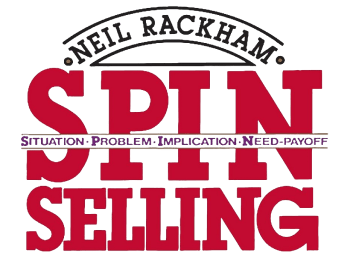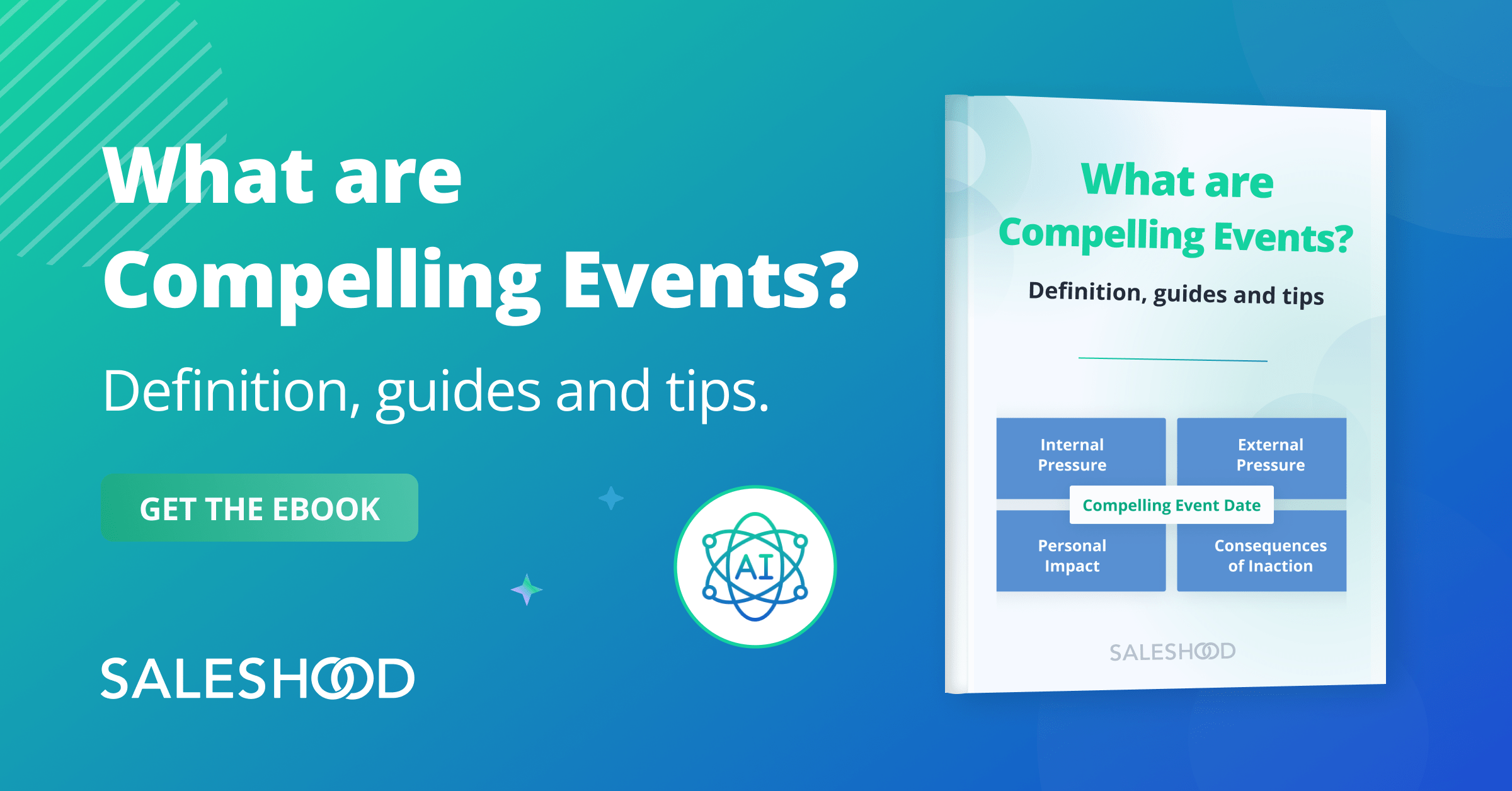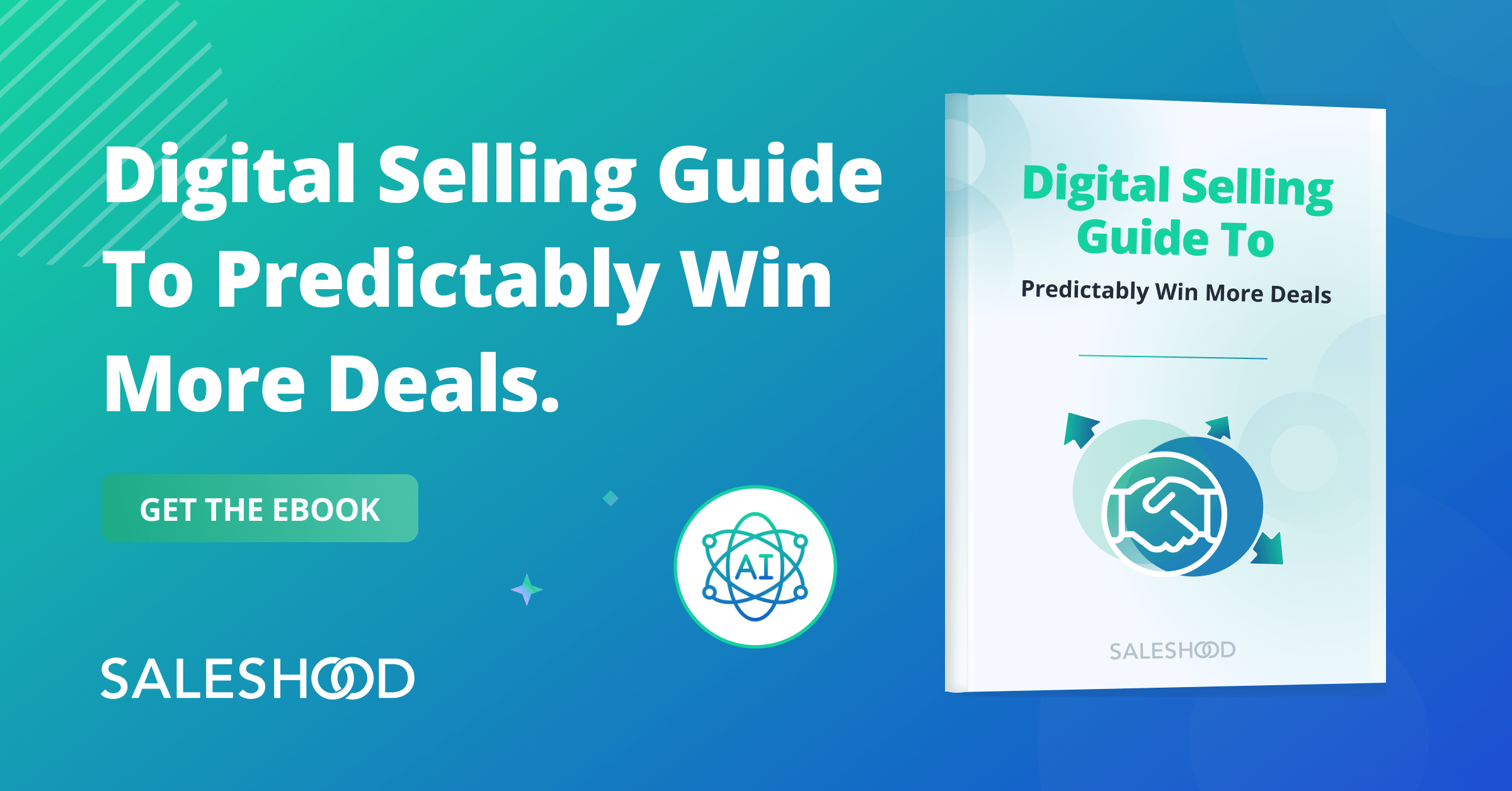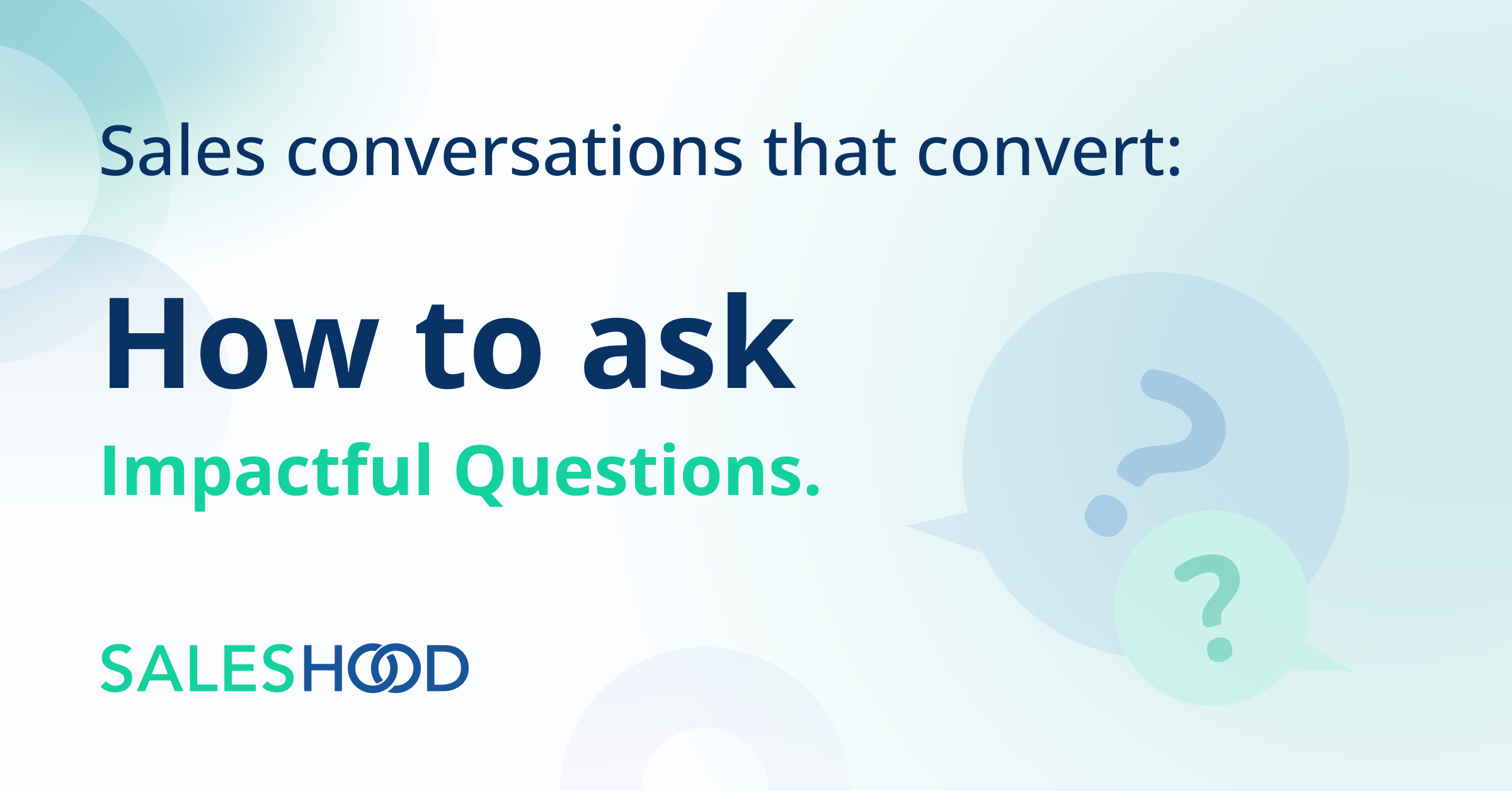The complicated landscape of business-to-business (B2B) sales has changed over the past few decades, but one thing remains true: Buyers want you to solve their problems. But first, you need to know what their pain points are.
With growing competition and increasing customer expectations, it’s essential to learn everything there is to know about buyers so you can provide the most complete solution possible. And the best way to collect that information is by asking the right questions and listening intently, two core practices of SPIN Selling.
In this guide, we’ll explain the SPIN Selling sales methodology and help you build better relationships with buying teams so you can close more deals.
What is SPIN Selling?SPIN Selling is a sales methodology first introduced in Neil Rackham’s 1988 sales book of the same name SPIN Selling. SPIN selling involves asking leading questions to guide customers through each buying stage. |
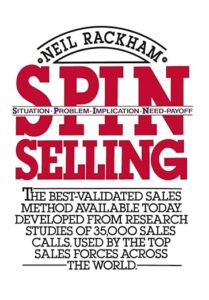 |
SPIN Selling prioritizes getting to know as much about stakeholders as possible. It’s an approach that focuses on building relationships with your buyers through effective communication and active listening. In a way, SPIN selling is getting your customers to better understand their own needs, and how you can provide the solution (hopefully).
In SPIN Selling, sales reps become more like consultants who work alongside buyers to help them find the best solution. It encourages you to move away from rigid sales processes and traditional sales pitches in favor of uncovering and solving problems to help create value for buyers.
Why SPIN Selling works
SPIN Selling works because you can help buyers identify their pain points, understand why they need to make a change, and position your solution as their best bet.
You aren’t just pushing a one-size-fits-all solution that probably meets their needs based on market research; you’re learning what they value the most and tailoring your solution to those desires.
The more you learn, the easier it is to deeply understand their needs, the problems they face, and the impact those problems have on their business so you can show them the value your solution offers.
The four types of SPIN questions with examples
At its core, SPIN Selling depends on the questions you ask buyers to guide them through the sales cycle.
Rackham’s revolutionary study, documented in his groundbreaking book, analyzed 35,000 sales calls and yielded transformative insights about customers. The largest study of its kind, Rackham’s findings debunked many popular sales practices and myths. The most important discoveries from this comprehensive research.
In the end, Neil Rackham identified four distinct types of questions that successful salespeople use to win deals. Each type represents a letter in ‘SPIN’ Selling and acts as a critical step in the sales conversation that reveals new information or encourages buyers to seek your solution.
Situation
Situational questions are the earliest and most general questions you’ll ask. Their purpose is to gather information about their current situation, including their existing process, current tools, priorities, budget, and other context-setting information that you can’t find online already.
Situational questions are mostly for your team’s knowledge and for helping overcome obstacles later, so they’re lower-impact than the other steps. Avoid spending too much time on them by conducting in-depth research on company websites and social media platforms like LinkedIn to learn about stakeholders and general company information.
Examples of situation questions
- “How many people are on your team?”
- “How do you handle [process] currently?”
- “On a scale of 1-10, how important is [process] to your business?”
- “What tools are you currently using for [process]?”
- “How much time do you spend on [process] each week?”
Problem
Problem questions aim to identify any challenges that your buyers are experiencing with their current solutions or processes. The questions you ask will encourage them to recognize issues on their own, like questioning how efficient they are currently, what bottlenecks they’re experiencing, and what their ideal solution looks like.
Asking questions about buyers’ problems helps you tailor solutions to their needs and establish pain points to leverage at the next stage. You might even highlight something they didn’t think of previously, helping make your case for a useful solution.
Examples of problem questions
- “Are you satisfied with how long [process] takes?”
- “What do you wish your current [process] solution had?”
- “Have your [process] tools ever failed?”
- “What does your ideal [process] process look like?”
- “Do projects involving [process] usually stay on budget?”
Implication
Implication questions help gauge the importance of the problems and pain points revealed during problem questioning. These problems may have financial or logistical consequences that can help instill urgency in the deal and encourage your buyer to consider your solution.
During implication questioning, your goal is to make the buyer evaluate the impact that their problems have and the costs associated with them. Questions should be thought-provoking, providing more insight into how much of a priority certain problems are so you can address them effectively.
Examples of implication questions
- “What’s preventing you from completing [process] faster?”
- “How is [process] impacting your work satisfaction?”
- “How do KPIs on [process] compare to other processes?”
- “Does [process] make it harder to provide a great customer experience?”
- “How would saving money on [process] help your business?”
Need-Payoff
Need-payoff questions are the final type of question that precedes the decision-making process. These questions encourage prospects to explore how your solution would solve their problems in their own words and highlight the potential benefits they could see.
The need-payoff questions you ask should address the key implication questions you asked earlier to help demonstrate the value your solution offers. Ideally, they’ll convince themselves that you’re the right answer.
Examples of need-payoff questions
- “What would cutting [process] time by 30% do for your timelines?”
- “How would an easier [process] process impact your work satisfaction?”
- “How would better KPIs on [process] impact your business performance?”
- “What impact would making [process] faster have on customer satisfaction?
- “If you saved 30% on [process], where would you reallocate the funds to?”
How to SPIN Sell in each stage of the sales cycle
While SPIN Selling is a flexible sales methodology, it separates the buyer journey into four stages, where you’ll utilize the different types of questions to gather valuable information and progress the deal.
Here’s how to approach each stage.
Opening or preliminaries
At the opening of your sales cycle, you should try to collect as much information about your prospect as possible using situation questions. Your goal is to build a positive, sincere relationship by carefully listening to their answers, asking thoughtful questions, and showing genuine interest in helping to solve their problems. Avoid pitching or talking too much about your products or services to earn trust.
Investigating
During the investigation stage, you aim to uncover pain points and challenges with their current system, tools, or processes. You’ll use problem questions to encourage buyers to explore areas for improvement that you can address later in the sales cycle.
Investigation can also use implication questions as you evaluate how important these problems are to them and how much they impact satisfaction, performance, or cost-efficiency.
Demonstrating capability
When you demonstrate capabilities, you’re making your custom-tailored sales pitch to the buyer. You’ll take all the information you gathered and the problems they’ve expressed to explain and demonstrate how your solution addresses their needs. You may use presentations or demos to make your point, with customization to ensure you’re explicitly targeting their pain points.
During this step, you’ll use some implication questions, but you’ll mostly ask need-pay questions after making your pitch so the buyers can make the connection between their problems, your solutions, and the results they can achieve.
Obtaining commitment
After you’ve presented your solution, it’s time to obtain a commitment. This is the closing step of the sales cycle, which is the culmination of your hard work throughout each stage. The deal will either close, make progress, or fall flat.
Depending on the deal’s outcome, you might ask need-pay questions at this stage. For example, you may need to reassure the buyer that your solution is right for them or encourage follow-up meetings to continue the sales pitch later.
However, in most deals, you can ask for feedback or evaluate your use of the SPIN methodology.
How to measure outcomes in SPIN Selling
SPIN Selling is an effective sales methodology that puts you in a great position to close deals, but not every outcome is an immediate slam dunk. Deals can result in a few different scenarios–both positive and negative.
Continuation
A continuation means the buyer hasn’t committed to taking additional steps, leaving the deal in limbo. At this stage, you can try to arrange additional meetings, provide additional resources, or reach out later to try to re-engage the lead.
Examples of continuations include asking for more time to think about the decision or revisiting the deal at another time.
To improve, you can track the number of continuations your deals result in and see if certain approaches lead to better results. Alternatively, you may collect feedback from prospects to identify where your approach can be better.
Advance
Advances are a positive result that means the buyer is taking specific steps forward in the deal cycle. At this stage, you may schedule another meeting with additional decision-makers, schedule a demo, or create a proposal for the buyer to present to their team.
Order
Orders are the ultimate outcome because they mean a deal has been successful. At this stage, buyers become customers and sign contracts, purchase orders, or agreements to move forward with the deal.
No-sale
No-sale outcomes are the worst result. They mean your opportunity is likely lost, which can be due to a wide range of reasons. But they’re not always something you can control.
In some cases, your costs may be too high, or your features don’t match their needs. These are opportunities where you can improve your approach, potentially leading to better outcomes. For example, you can ask more budget-based questions throughout the sales cycle before presenting a solution that’s potentially out of their price range or change the way you explain certain features or capabilities to prospects.
Alternatively, some deals simply can’t be won. If your products don’t apply to a potential customer, no well-crafted sales strategy can salvage it. In this case, you should reevaluate what kind of leads you’re targeting to make sure you’re not wasting marketing funds or sales reps’ time.
Does SPIN Selling still work?
SPIN Selling was developed nearly four decades ago so there’s questions and think pieces questioning whether SPIN selling is still an effective approach. And a lot has changed since then.
Technology and marketing have evolved to make information more accessible than ever. Sales reps are no longer the primary source of information on deals. Buyers can learn about your solutions on your website or with other online resources, making information-focused sales strategies less effective.
Instead, reps now take on the role of consultants who collaborate with buyers to learn their specific needs and solve their problems.
Luckily, this customer-centric approach aligns perfectly with SPIN Selling’s methods, which are based on building relationships and personalized problem-solving. Thus, SPIN Selling is still effective today.
Tips for modern SPIN Selling
SPIN Selling is an effective sales methodology that you can utilize, especially with the development of other complementary tools.
Here are a few quick tips for using SPIN Selling in the modern B2B sales market.
- Take advantage of informational accessibility to learn about buyers on LinkedIn or company sites before asking unnecessary situational questions.
- Focus on listening as much as possible. Don’t introduce your solution until you learn about the problems buyers want you to solve so you can tailor your value props to their pain points.
- Use technology like customer relationship management (CRM) systems to manage valuable information about prospects and sales enablement platforms like SalesHood to streamline deal cycles and improve communication.
- Ask the right questions to guide your buyers through the different sales stages without rushing them to a faster close.
- Always look for opportunities to improve through feedback, practice, or training.
With these tips, you’ll be able to keep SPIN Selling timeless.
SPIN Selling: Customer-centric sales for modern buyers
SPIN Selling is a classic sales methodology that thrives in modern sales. Customers don’t rely on sales teams for information anymore–they want solutions for their specific problems.
The more you know about your buyers, the better you can address their concerns. By taking a consultative approach instead of using traditional sales strategies, you’re able to show buyers how you can solve their specific problems instead of just telling them what you can do with a sales pitch.
With the right questions, your buyers will effectively sell themselves as you help them uncover hidden wants and needs, identify what’s holding them back, and realize the benefits of resolving these challenges with your solution. You just need to listen intently and facilitate their problem solving.
And don’t forget to leverage modern sales tools like Digital Sales Rooms to streamline communication throughout the deal cycle with chats and custom content. Plus, features like call transcriptions and meeting recordings can help you improve your SPIN Selling skills as you review your conversations.
